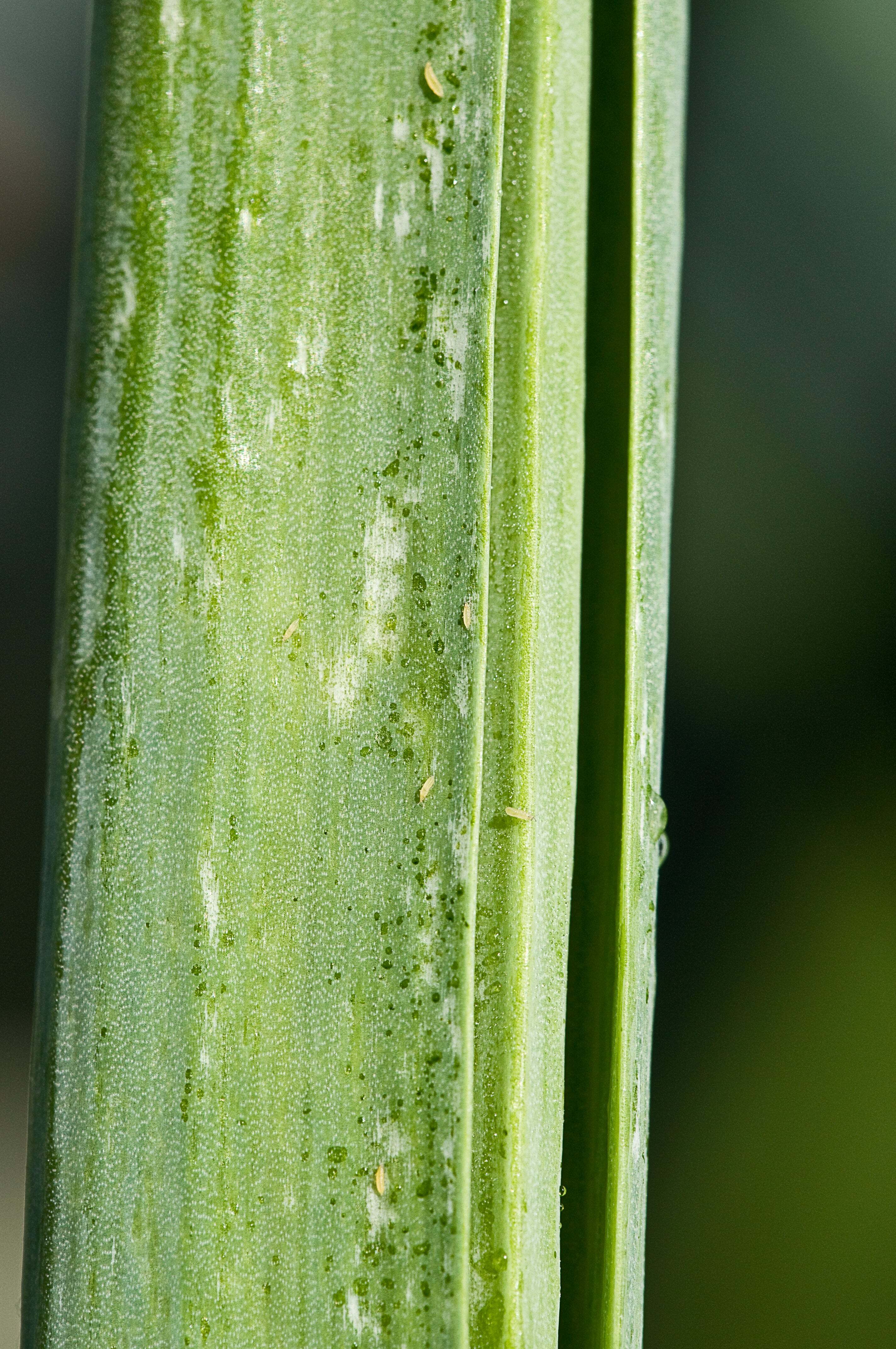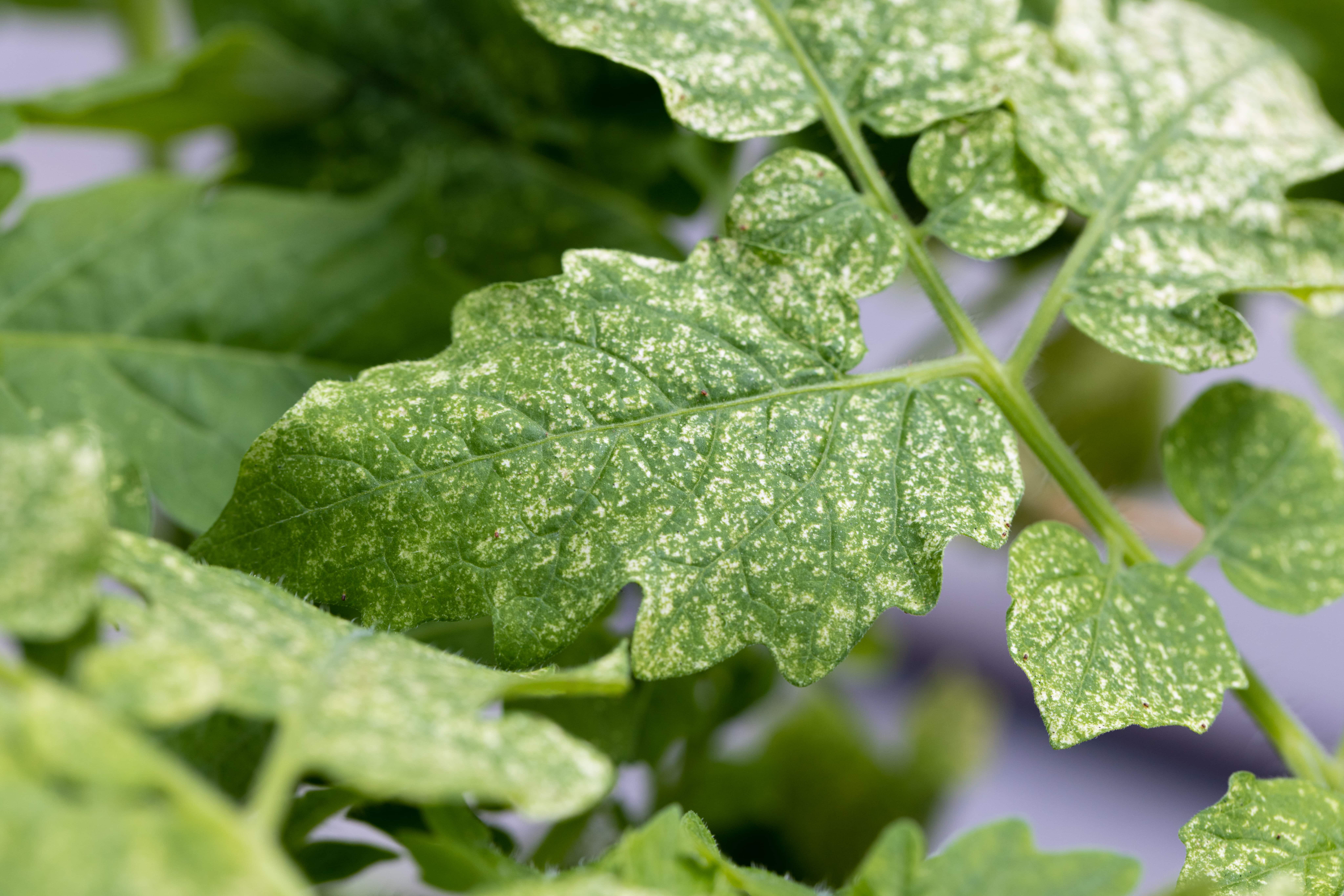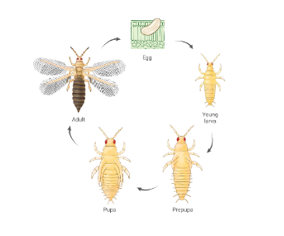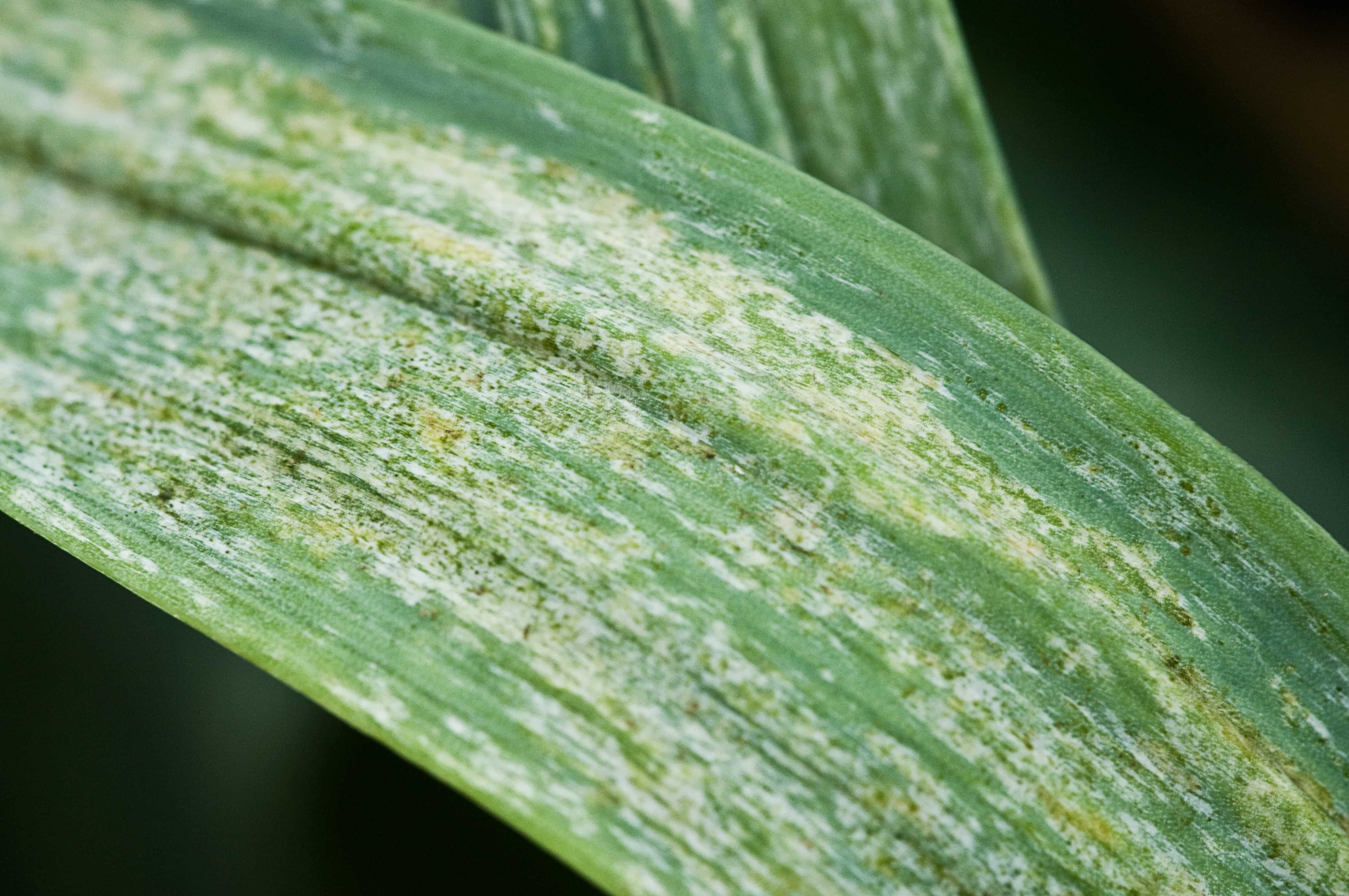Thrips on Houseplants: Identification, Damage & Natural Control
Jan 27, 2025
Thrips are among the most frustrating pests indoor growers and houseplant keepers encounter. These tiny, slender insects hide in leaves and flowers, reproduce quickly, and often cause significant damage before you even notice them. Fortunately, once you understand how to identify thrips and recognize their life cycle, you can take effective, natural steps to manage pressure and keep your plants thriving.
What Is a Thrips Insect?
Thrips are small, narrow-bodied insects typically 0.5–1.5 mm long. Depending on the species and life stage, they may appear pale yellow, brown, or black. Adult thrips sometimes have narrow, fringed wings, while larvae are wingless and usually lighter in color. Because of their size, thrips are hard to spot with the naked eye. Most indoor growers notice the damage before they see the insects themselves.
Identification: Thrips in the house & on houseplants
Thrips are often first noticed indoors due to the damage they cause. They can affect a wide range of houseplants, especially those with soft foliage or flowers. Some species are more common in tropical plants, while others thrive in greenhouse or propagation environments.
What Does Thrips Damage Look Like?
Identifying thrips damage early is key to managing pressure before populations grow. Because thrips are small and often hidden in plant tissue, most indoor growers first notice the symptoms rather than the insects themselves.
Common Signs of Thrips on Houseplants
Silvery streaks or stippling on leaves — caused by thrips piercing plant cells and sucking out contents
Black specks near feeding sites — these are thrips droppings, often found on leaf undersides
Distorted or stunted new growth — thrips feeding on young tissue can deform leaves and stems
Browning or streaked flower petals — especially noticeable on light-colored blooms
Dry, curled, or scarred leaves — chronic feeding leads to tissue collapse and scarring
Leaf drop or reduced vigor — in high-pressure situations, plants may shed leaves or stop growing
How to Tell It’s Thrips (and Not Something Else)
Thrips damage can resemble other issues like spider mites, nutrient deficiencies, or mechanical injury. Here’s how to narrow it down:
Thrips vs. Spider Mites: Spider mites often leave fine webbing and cause uniform stippling. Thrips leave irregular silvery streaks and black specks (droppings), but no webbing.
Thrips vs. Nutrient Deficiency: Nutrient issues usually affect older leaves first and follow a predictable pattern (e.g., yellowing between veins). Thrips damage is more random and concentrated on new growth and flowers.
Thrips vs. Mechanical Damage: Physical damage (e.g., from handling or wind) doesn’t progress or spread. Thrips damage worsens over time and spreads to nearby plants.
^This image is of stippling from Spider Mite Damage to help show the difference between the two. When damage is present and caused by spider mites, webbing is also often visible.
Where to Look
Leaf undersides — especially near veins and midribs
New growth — thrips prefer tender tissue
Flowers and buds — damage may appear as streaks or browning
Leaf folds or galls — some species hide inside curled leaves
Diagnostic Tips
Use a hand lens or macro phone camera to inspect leaves closely
Tap leaves over a white sheet of paper (Adult thrips may fall and crawl)
Check sticky traps for adult thrips (Especially near windows or propagation zones)
Compare damage across plants (Thrips often spread between nearby hosts)
Life Cycle of Thrips
Thrips reproduce rapidly, making them difficult to manage indoors. While the general cycle includes eggs, larvae, pupae, and adults, the exact behavior and location of each stage varies by species.
General Thrips Life Cycle
Eggs – Inserted into leaf or flower tissue; invisible to the eye
Larvae (2 stages) – Feed actively on leaves and flowers; cause the most damage
Prepupa & Pupa – Often fall into soil, leaf litter, or crevices to develop into adults
Adults – Resume feeding and reproduction, restarting the cycle
A single generation can complete in just 2–3 weeks under warm indoor conditions, leading to rapid population growth.
Species-Specific Life Cycles
1. Western Flower Thrips (Frankliniella occidentalis)
Egg Deposition: Inserted into plant tissue (leaves, petals, stems).
Larval Feeding Site: Flowers and leaves.
Pupation Site: In soil or on the plant.
Adult Appearance: Yellow to dark brown; 1.2 mm (females), 1.0 mm (males); fringed wings.
Life Cycle Duration: ~15 days at 25°C
Reproduction: Sexual and parthenogenetic.
Notes: Major vector of TSWV, INSV, and TCSV. Susceptible to Entonem.
2. Impatiens Thrips (Echinothrips americanus)
Egg Deposition: On leaves.
Larval Feeding Site: Lower leaves.
Pupation Site: On the plant (not in soil).
Adult Appearance: Dark brown to black with yellow leg tips; forewings dark with white base.
Life Cycle Duration: ~5 weeks at 20°C.
Reproduction: Sexual.
3. Palm Thrips (Parthenothrips dracaenae)
Egg Deposition: On older leaves.
Larval Feeding Site: Lower leaf surfaces, often in groups.
Pupation Site: On the plant.
Adult Appearance: Brown with pale wings and two dark cross bands; yellow leg tips.
Life Cycle Duration: Not specified; all stages on plant.
Reproduction: Sexual.
Notes: Common in Dracaena, palms, orchids.
5. Chilli Thrips (Scirtothrips dorsalis)
Egg Deposition: In soft plant tissue.
Larval Feeding Site: New growth, young leaves, buds.
Pupation Site: On leaves or in leaf litter.
Adult Appearance: Small, yellowish.
Life Cycle Duration: 14–20 days.
Reproduction: Sexual and asexual.
Notes: Highly polyphagous. Affects many ornamentals and vegetables.
6. Greenhouse Thrips (Heliothrips haemorrhoidalis)
Egg Deposition: In leaf tissue.
Larval Feeding Site: Leaf undersides.
Pupation Site: On leaves.
Adult Appearance: Dark brown, slow-moving.
Life Cycle Duration: ~4 weeks.
Reproduction: Parthenogenetic.
Notes: All stages occur on the plant.
7. Onion Thrips (Thrips tabaci)
Egg Deposition: In leaf tissue.
Larval Feeding Site: Leaf veins and flowers.
Pupation Site: In soil or leaf litter.
Adult Appearance: Pale yellow to light brown; 0.8–1.0 mm.
Life Cycle Duration: ~13 days at 25°C.
Reproduction: Sexual and parthenogenetic.
Notes: Vector of TSWV. Common in onions, leeks, and greenhouse crops.
What Is a Leaf Gall?
A leaf gall is an abnormal swelling or fold in leaf tissue caused by insect feeding or egg-laying. Thrips like Gynaikothrips ficorum trigger this response, creating a protective chamber where they feed and develop. Galls shield thrips from predators and sprays, making them harder to control.
Why Thrips Are So Difficult Indoors
Eggs are hidden inside plant tissue, protected from sprays
Multiple generations per season
Many populations are resistant to chemical treatments
Small size makes them easy to overlook until damage is significant
Some species complete their entire life cycle on leaves, avoiding soil-based treatments
Leaf galls can shield thrips from predators and foliar sprays
These factors make integrated pest management (IPM) the most effective long-term strategy for thrips prevention and control.
Natural & Biological Control Options
Beneficial insects offer the most sustainable way to manage thrips on indoor plants:
Neoseiulus cucumeris – Targets thrips larvae and mites
Amblyseius swirskii – Effective against thrips and whiteflies
Minute pirate bugs (Orius insidiosus) – Highly effective against adult thrips, these predators fly, so we recommend taking that into account before using them in your home (Great for Greenhouses!)
Tip: Sachets of predatory mites (like Thripex Plus or Swirskii Ulti-Mite sachets) can be hung directly on plants including houseplants for continuous preventative protection. Bottle formulations are best for curative use when active thrips are present.
Other Natural Methods
Sticky traps: Yellow or blue cards help monitor populations
Neem oil or insecticidal soap: Suppress exposed thrips but won’t affect eggs or pupae
Pruning: Remove heavily affected leaves or flowers
Beneficial nematodes (Steinernema feltiae): Soil applications target pupating thrips (not effective for species that pupate on leaves)
Integrated Pest Management (IPM) for Thrips on Houseplants
A successful IPM approach combines monitoring, prevention, and biological control:
- Inspect new plants before bringing them indoors
- Quarantine new houseplants for 1–2 weeks
- Use sticky traps near windows and plant clusters
- Release beneficials early (predatory mites, Orius, lacewings)
- Keep plants healthy—stressed plants are more vulnerable
- Clean leaves regularly with a damp cloth or spray

Thrips FAQ
How big are adult thrips?
Adult thrips are tiny—usually about 1–2 mm long, making them difficult to spot without close inspection.
What do adult thrips look like?
AThey have elongated, slender bodies with narrow wings fringed with fine hairs. Most species appear yellow, tan, or dark brown, though color can vary by species and life stage.
Do adult thrips have wings?
Yes, most common species of adult thrips are winged. Adult thrips have two pairs of narrow wings with fringed edges, which they fold back over their body when at rest.
How can I tell them thrips apart from other small insects?
When distrubed Thrips move quickly and often sideways. Their asymmetrical mouthparts (adapted for piercing and sucking) are unique, but these are hard to see without magnification.
Where am I most likely to find adult thrips?
Adults typically hide in flowers, leaf folds, and tender plant tissue, feeding on sap and pollen. They may also be seen on sticky traps near plants.
Do thrips spread between plants?
Yes — adult thrips can fly short distances and crawl between plants indoors. This makes early detection and isolation critical.
Will thrips die off in winter?
Not indoors. Heated environments allow them to reproduce year-round. Some species do not pupate in the soil, making overwintering impossible, while others do — making early soil applications of Entonem beneficial in cooler months.
How long until beneficial insects work?
Predators begin working immediately, but visible results depend on population pressure and monitoring. Use sticky traps and visual inspection to track decline. In many cases, a single release may not be enough. Cooperative strategies — like pairing Entonem (soil pupae control) with Swirskii (foliar suppression in warm conditions) or Thripex (cooler conditions) — offer broader coverage. Monitor weekly to determine if a second release or additional predator is needed.
Can thrips reproduce without mating?
Yes. Species like Heliothrips haemorrhoidalis and Scirtothrips dorsalis reproduce parthenogenetically. Unmated females produce only males; mated females produce both sexes.
Do all thrips pupate in soil?
No. Echinothrips americanus, Parthenothrips dracaenae, and Gynaikothrips ficorum complete their life cycles entirely on the plant, often within leaf tissue or galls. Soil treatments like Entonem are most effective for species that pupate below the surface.
Why does thrips species matter?
Different thrips species have different life cycles, feeding behaviors, and pupation sites. For example, Western Flower Thrips pupate in soil, making them susceptible to Entonem, while Echinothrips americanus pupates on leaves, requiring foliar predators like Thripex. Some species form leaf galls, which shield them from sprays and predators. Knowing the species helps determine which biological controls to use, how to monitor effectively, and whether soil or foliar strategies are needed.
Can thrips issues be resolved with one treatment?
Rarely. Thrips have hidden life stages (eggs in tissue, pupae in soil or leaf folds), so multiple applications or predator introductions are often needed. Monitoring is essential to determine timing and effectiveness. For example, Entonem may need to be reapplied, or paired with foliar predators like Swirskii or Thripex depending on temperature.
Are sticky traps effective for all thrips species?
Sticky traps are useful for monitoring adult thrips activity, especially near windows, propagation zones, and plant clusters. They help track pressure but do not control populations. Use them alongside biological controls like Orius, Swirskii, or Thripex.
Are thrips mites?
No — thrips and mites are completely different types of arthropods. Thrips are insects with six legs and, in many species, fringed wings. Mites are arachnids with eight legs and no wings. They differ in anatomy, behavior, and how they interact with plants. Thrips feed by piercing plant cells and sucking out contents, while many mites (like spider mites) feed by scraping and sucking. Importantly, predatory mites like Swirskii, Thripex, and Cucumeris are used to control thrips populations — they are natural enemies, not related pests.
Conclusion
Thrips are tough, but not unbeatable. With consistent monitoring, preventive care, and natural enemies, you can manage thrips pressure sustainably and keep your houseplants healthy.


